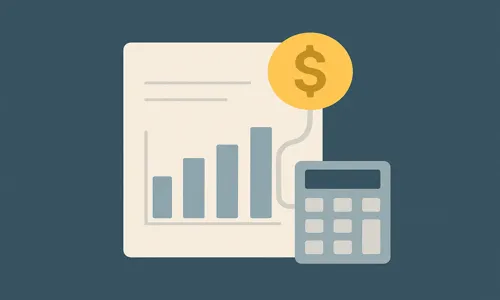In the world of digital marketing, budget planning is more than guesswork — it’s a goal-driven mathematical modelling process. In this article, I’ll break down a clear and practical method for how small to medium business owners can approach budget forecasting with intention and clarity.
1. Understanding the Core Variables Behind Budgeting
Your advertising budget is determined by a functional relationship involving the following variables:
Budget = f(Target Conversions, Conversion Rate, Click-Through Rate, CPC)
Definitions:
Target Conversions: The number of qualified leads or sales you aim to acquire within a specific time frame.
Conversion Rate (CR): The percentage of landing page visitors who complete the desired action.
Click-Through Rate (CTR): The likelihood that someone will click on your ad.
Cost Per Click (CPC): The cost paid per ad click, influenced by platform competition and bidding environment.
2. Reverse-Engineered Budget Calculation Formula
Using a reverse approach, we can calculate the required ad budget based on the final business goal:
Budget = (Target Conversions ÷ CR ÷ CTR) × CPC
Example:
Let’s say an international education consultancy wants to acquire 15 new leads per month. Based on historical data:
Landing Page CR = 6%
Ad CTR = 4%
Industry CPC = $2.30
Step-by-step:
- Required Landing Page Visits = 15 ÷ 6% = 250 visits
- Required Ad Clicks = 250 ÷ 4% = 6,250 clicks
- Estimated Monthly Budget = 6,250 × \$2.30 = \$14,375
3. Key Adjustment Factors in Real-World Application
In real campaigns, theoretical budgets often need to be adjusted. Consider the following:
- Performance Degradation Coefficient. 2. Channel Variability, different platforms produce different results:
- Google Search Ads: Higher CPC, moderate CTR (2–5%)
- Social Ads (Meta, TikTok, etc.): Lower CPC, higher CTR (5–8%) but often lower CR
- Time-Based Budgeting Strategy
Use a rolling budget to reduce risk and improve accuracy:
- Month 1: Allocate ~80% of theoretical budget to test
- Month 2+: Adjust based on actual CTR/CR data
4. Execution Framework
Here’s a phased approach we recommend for budget planning and optimisation:
Phase 1: Diagnostic Stage
- Clean historical data
- Funnel analysis report
Phase 2: Modelling Stage
- Calibrate key parameters
- Build sensitivity models
Phase 3: Optimisation Stage
- Controlled testing
- Dynamic budget allocation strategy

